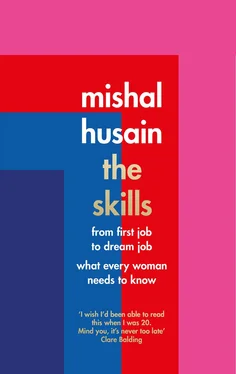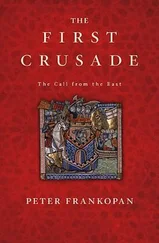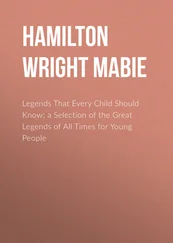In both my parents’ families, mine would be the third generation in which women had had educational opportunities comparable to men: in the 1930s, in what was then British India, my two grandmothers were enrolled on medical and nursing courses. When it came to my own education, there would be some hard choices. Rather than send me to secondary school in Saudi Arabia, where we were living in the 1980s, my parents decided I would be better off in the UK. But that meant boarding school and long separations. Years later, my father told me that the motivation wasn’t only a desire for me to have a British education, but also a worry that remaining in Saudi Arabia, where I would have to wear an abaya or black cloak in public, might fundamentally alter my belief about what I could achieve in life. I know that had it not been for that decision, which in turn meant I stayed in the UK for university, I wouldn’t be where I am now.
With all of this support, why do I say my courage came later in life than it might have? Partly because when I think back to my university years, I know that I would have gained so much more from them had I been more willing to ask questions, to take risks and to test out arguments in front of my lecturers and fellow students. I was simply too cautious, too conscious that I might have got the wrong end of the stick and appear silly or uninformed. That caution persisted in the first part of my professional life – I was a producer at Bloomberg TV and then at the BBC, before getting into presenting at the age of twenty-seven – when I would mull over running orders and scripts, in search of the ideal turn of phrase or link between one story and the next. I would approach new projects, such as working on the Olympics, almost like an exam – setting aside time for preparation, making extensive notes in advance, trying to cover every base. Working on Today knocked that search for perfection out of me for the most basic of reasons: the shortage of time focused the mind like nothing I had previously experienced.
That’s not to say there is no longer a structure to the way I work – quite the opposite, because when time is of the essence, it is vital to have figured out the techniques that suit you and stick to them. For interviewing, much of my own method goes back to what I learned from studying the law: having the evidence to back up any assertions, knowing the arguments on the other side and being able to compare situations and ask if what happened in one case might apply elsewhere. I try to keep the focus on what I do know and how I can use it, because focusing on what is lacking can take you perilously close to losing your nerve.
For this book, I wanted to gather together approaches and ideas that have helped me, as well as the views of others. And I wanted to write from my perspective as a woman, because we’re at a point in time when it is clear that we need some better ideas about how more women can advance to levels comparable with men. In some countries girls and women face reduced educational and employment opportunities, but even in the most progressive nations, too many companies and workplaces can be gender-mapped into a pyramid shape: women and men represented in equal numbers at entry level but the presence of women tailing off dramatically the more senior the role. 1At the beginning of 2018, just seven women were leading FTSE 100 companies, fewer than the number of men called David occupying the same positions. 2A century after the first woman was elected to Parliament at Westminster, two-thirds of British MPs are men. 3The pattern is the same for partners in law firms in England and Wales, where only a third are women. 4
Imbalances prevail on the airwaves, too. On the UK’s six most prominent broadcast news programmes, a 2018 study found that 2.2 male experts appear for every female one. 5It’s a situation that many editors and producers are now actively trying to change – striving for a fifty-fifty gender balance among contributors, wherever possible. Rather than the same guests being booked time and again, it means they might begin the search with the ambition of finding a man and a woman to speak on a certain topic. And that starting point can make a powerful difference – the search becomes wider, with new expert voices often discovered in the process.
We live in an age of much greater consciousness about the importance of representation, but I still find myself in settings that are overwhelmingly male. All-male panels – or ‘manels’ – remain commonplace at some conferences, and even where high-profile events such as the World Economic Forum in Davos have strived to achieve a better gender balance, it’s still apparent when you go there that many of the women present are journalists or conference staff. One year, during an off-the-record media session with the Iranian president, I realised I was one of around ten women in a gathering of well over a hundred people. As the president’s speech ended and the questions began, I mulled over what I might ask. And then it struck me that given the tiny number of women in the room, there was a strong chance the session might end without a woman’s voice being heard at all. Suddenly, the principle of participation seemed far more important than the actual question. I stuck up my hand and spoke.
Uncomfortable truths can emerge even when women are in prominent positions. Why was Claire Foy, who took the lead role of Queen Elizabeth in the hit television series The Crown , paid less for her work than Matt Smith, in the supporting role of Prince Philip? In the wake of the Harvey Weinstein scandal, the actor Emma Thompson was one of the first to say that the shocking details emerging were part of a deeper malaise. ‘In our systems there are not nearly enough women, particularly in Hollywood, in positions of power. There aren’t enough women at the top of the tree – in the studios – who could perhaps balance everything out. There aren’t enough women on set. This is part of our difficulty,’ she said. ‘This is a gender dysfunction.’ 6
Today when I hear people say everything’s going in the right direction, that their daughters won’t experience the same barriers, and even that women hold all the cards – I am not convinced. Of course it’s true that my generation has had opportunities that most of our mothers did not, but we’ve also come up against obstacles that many of us expected would be gone by now. Work and childcare remains a difficult balancing act for too many women and the bulk of home responsibilities are also mostly ours. Gender pay gaps illustrate the paucity of women in higher-paid roles while equal pay claims raise questions about how they are perceived and valued in comparison with male colleagues.
Perhaps part of the answer lies deep in our subconscious. I know that when I close my eyes and conjure up an image of someone at the top of my own chosen profession – a main presenter or a prominent interviewer – I see a man. I see a white man, as it happens. It reflects the reality of the world that surrounds me, but the permutations of that subconscious image can be far-reaching. They might seep into judgements I make about people performing that role – do they fit the picture I have in my head? If not, perhaps I will perceive them as having less of a right to be there. And what about an internal effect – how might that image affect the way I view my own potential and chances of progression?
Just as I was writing this book, the emergence of #MeToo and #TimesUp made me look back on my own experiences and think anew about their impact in shaping my sense of self. I’ve been flashed at and groped in public places and know how vulnerable it can make a girl or an adult woman feel. At work, there were times early in my career when I felt my suggestions weren’t taken as seriously as a man’s might have been (‘Stick to what you’re good at’ was one comment from a manager). At Today , there have been occasions when I had the distinct impression that a prominent contributor walking into the studio was looking across at my co-presenter and wishing he was doing the interview with them rather than me.
Читать дальше












